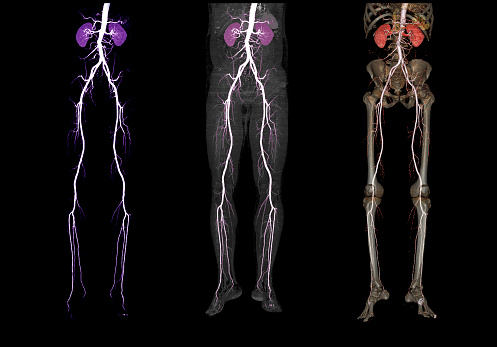Holy Fire
Holy fire is a type of fungal infection that has affected communities all over Europe. According to the website Hyperallergic, there have been more than 40 major outbreaks, including one in 1418 in Paris, which killed about 50,000 people. The disease is caused by ergot, a fungus that was first documented in ancient Chinese texts and ancient Egyptian papyruses.
erysipelas
Erysipelas, or holy fire disease, is a common skin infection that affects both adults and children. It may occur on the face, head, or lower extremities. In most cases, the infection will involve the face. Upper extremity infections account for two to five percent of the total cases, while the disease rarely affects the trunk and genitalia. Symptoms of the infection typically include a burning sensation, diffuse swelling, tenderness, and bullae formation.
Erysipelas infections may occur on any part of the skin, but they tend to affect the extremities the most. The infections are caused by a bacterium called Streptococcus pyogenes, which also causes strep throat and pharyngitis. The infection may also occur on the face and in the nasal cavities.
St. Anthony’s fire is another name for this condition, but there are many others. St. Anthony’s fire is a common type of hot red strep skin infection that was once associated with the Catholic church. It is an infection that usually clears up with antibiotics.
In some patients, lymphedema is a complication of erysipelas. Although few reports have described it in patients with erysipelas, one study hypothesized that it is a pre-existing physiological disorder.
Treatment of erysipelas varies, depending on the extent of the infection. If left untreated, the infection can spread to other parts of the body and organs. In addition, in 18-30 percent of cases, erysipelas can recur.
Before antibiotics became available, skin cleaning and a cool dressing were used to treat the infection. The disease was also attributed to a “holy” origin, and is still called “St Anthony’s fire” in many Anglo-Saxon countries. Famous victims of this disease include Queen Anne and Pope Gregory XVI.
St. Anthony’s fire
Ergotism, a condition caused by the presence of the fungus ergot, is responsible for the symptoms of St. Anthony’s fire disease. Ergotamines are chemicals produced by the fungus that cause constriction of blood vessels and contraction of the uterus’ muscles. In some Anglo-Saxon countries, ergotism is still referred to as “St. Anthony’s fire disease.” Known victims of this disease include Queen Anne and Pope Gregory XVI.
Ergotism has been attributed to ancient times, but it reached its apogee in the Middle Ages. Because of its prevalence, a monastic order was formed to care for the afflicted. The monks named their order after St. Anthony and dubbed the disease “ignis sacer” (holy fire) or St. Anthony’s fire.
Gangrenous ergotism
Gangrenous ergotism and Holy Fire disease are two different conditions, but they have similar symptoms. Both conditions cause severe swelling of the extremities and can lead to amputation of limbs. The symptoms of ergotism include a burning sensation in the extremities, which is known as Holy Fire. In some cases, the disease can also be accompanied by convulsions and psychoactive symptoms.
Ergotisms are caused by the ingestion of ergot alkaloids, which are produced by a fungus in the plant Claviceps purpurea sclerotia. These alkaloids have both vascular and neuromuscular effects, causing smooth-muscle contractions. They also block the release of neurohormones and affect the central nervous system. Some of these ergot alkaloids have therapeutic uses.
In the Middle Ages, people suffering from ergotism often sought help from Saint Anthony. His relics, interred at La Motte near Vienne, France, were said to cure ergotism. This prompted a nobleman named Gaston and his son Girond to establish a hospital near the church. The disease became known as Holy Fire, and Saint Anthony’s fire.
Ergotism was a widespread disease in Europe. Before antibiotics were discovered, it was common for people to treat it with skin cleaning and cool dressing. Because it was attributed to a “holy” source, this form of ergotism is still called “Holy Fire” in many Anglo-Saxon countries. Pope Gregory XVI and Queen Anne were among the famous victims of the disease.
Claviceps purpurea is the species that causes ergotism. The fungus starts off as a small black rind-covered tube called a sclerotium. The sclerotium then germinates, taking over the grain and hardening into a purple curved spur.
Ascomycetous cereal disease
During the Middle Ages, ergot, an Ascomycete which infects cereal plants, caused outbreaks of disease in animals and humans. When enough people were infected, the disease would cause extreme hallucinations, convulsions, and even the loss of limbs. People who consumed the fungus would die in a short period of time.
Ascomycetous fungi are heterotrophic organisms and require organic compounds to survive. They feed on dead plants, foodstuffs, and other living organisms. They produce powerful digestive enzymes which break down organic compounds into smaller molecules. Most species live on dead plant matter, but some species also colonize other fungi and derive their energy from the tissues of their hosts.
Ascomycetous fungi cause a number of different plant and animal diseases. In agriculture, the most common is ergot, which can cause downgraded loads in crops and livestock. In fact, as much as 50% of wheat in Alberta was ruined by the disease in 2015. A good crop rotation program and deep plowing can prevent the spread of ascomycetous fungi. It’s also vital to be aware of symptoms and be alert.
Ascomycetous fungi can cause damage in cereal crops. Infected plants have poor seedling growth and a reduced crop stand. It is important to ensure a good seed density and healthy plant growth. Moreover, nitrogen fertilization is necessary to prevent and control ergot.
Hallucinations caused by ergotism
Ergotism is a fungal infection that grows on cereal grains, most often rye. In 1951, a severe outbreak occurred in the French village of Pont-Saint-Espirit. A study published in the British Medical Journal reported that the disease caused hallucinations. The patients often experienced images of animals and experienced agitation. In severe cases, hallucinations may even lead to psychotic episodes.
Ergotism was once associated with Saint Anthony. In medieval times, his relics were venerated in churches and hospitals. The monks believed that the relics had healing powers. They also believed that the relics contained the cure for ergotism.
The disease has also been the subject of art, particularly in the late Middle Ages. The artist Matthias Grunewald, a contemporary of Albrecht Durer, painted figures with abnormal postures and skin eruptions in his works, while the Norse-Icelandic sagas also mention the disease. It’s not known if it was caused by ergotism or by a completely different cause, but it has been suggested as a possible cause.
The symptoms of ergotism include convulsions, hallucinations, rigid limbs, and diarrhea. Most patients survive the first phase without any treatment but often experience dementia and delirium. In some cases, the disease can be fatal, so eradication of ergotism in medieval times is essential.
Ergotism has caused many people to be accused of witchcraft in medieval times, especially in Europe. Many of these cases led to the Salem Witch Trials. These trials are a symbol of the dark period of colonial America, as well as a curious medical mystery.



